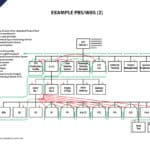Interface management planning is typically content included in overall engineering planning and linked to standard or tailored engineering procedures. However, a discrete “Interface Management Plan” may be used, especially for a critical, complex interface that justifies a formal entity with assigned responsibility for managing the interface from requirements through to successful implementation. Such a group is sometimes referred to as an Interface Control Working Group (ICWG). The subject is addressed in PPI’s Systems Engineering Plan (SEP) Data Item Description (DID) available to clients and alumni of PPI on the Systems Engineering Goldmine. The whole subject is dealt with thoroughly in PPI’s 2-day Interface Engineering and Management course developed by Paul Davies and delivered worldwide (except Russia) by Paul.
Some concerns for interface management planning, both generally and for a given interface, are:
- internal interface definition within system architecting
- creation of interface requirements
- traceability of interface requirements on interfacing system elements to parent system requirements
- recording of interface requirements – use of Interface Requirements Specification (IRS) YES or NO?
- use or otherwise for management of an Interface of an Interface Control Working Group (ICWG)
- authorities and approval process for interface requirements
- balance of detail between interface requirements and interface design
- process of interface design
- ensuring consistency of the two ends of interface design
- recording of design of an interface – use of Interface Design Description (IDD)/Interface Control Document (ICD) YES or NO?
- traceability between interface design and interface requirements
- authorities and approval process for interface design
- mechanisms for avoiding impasse as a result of failure of the stakeholders in the interfacing ends to agree, e.g. escalation
- process of transformation of interface design to the status of requirements, typically when the interface design is ready for release
- for larger systems and more complex interfaces that evolve in design through physical levels, the strategy for recording and controlling that evolution
- planning for the use of simulators/models/stubs in undertaking the subsystem interfacing aspects of system integration
- policies for standardization of interfaces
- reconciliation of project-specific interface requirements and design issues with product and/or product line policies
- policies and strategies for forward and backward interface compatibilities in the face of product evolution
- identification and definition of additional interfaces needed for configurations other than for use, e.g. in development, transportation, setting to work, maintenance, repair or replacement, disposal
- policies for reuse of interface requirements






